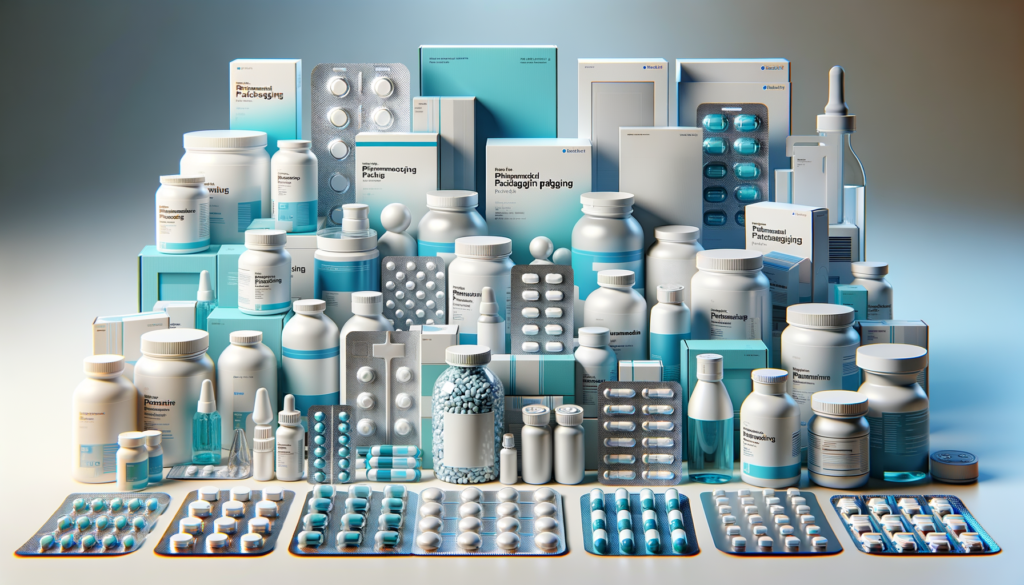The Gaming Blog

Introduction to Pharmaceutical Packaging
Pharmaceutical packaging is a critical aspect of the healthcare industry, serving as the first line of defense in preserving the integrity of medications. It not only protects the product from physical damage but also shields it from environmental factors such as moisture, light, and temperature fluctuations. The importance of pharmaceutical packaging cannot be overstated, as it ensures that the medication reaches the consumer in its intended form, free from contamination and degradation.
In recent years, the pharmaceutical packaging industry has witnessed significant advancements due to technological innovations and increasing regulatory requirements. These changes aim to enhance patient safety, improve the user experience, and ensure compliance with stringent standards. This article delves into various facets of pharmaceutical packaging, exploring its types, materials, innovations, and the challenges it faces in today’s dynamic environment.
Types and Materials of Pharmaceutical Packaging
Pharmaceutical packaging can be broadly categorized into three main types: primary, secondary, and tertiary packaging. Each type serves a distinct purpose and is crucial in the overall packaging process.
- Primary Packaging: This is the material that directly contacts the medication, such as blister packs, bottles, and vials. Its primary function is to protect the drug from contamination and degradation.
- Secondary Packaging: This includes cartons and boxes that group primary packages together. It provides additional protection and often contains important information about the medication.
- Tertiary Packaging: Used for bulk handling and shipping, this includes crates and pallets that facilitate transportation and storage.
The materials used in pharmaceutical packaging vary based on the type of medication and its storage requirements. Common materials include glass, plastic, metal, and paperboard. Each material offers unique benefits, such as glass’s excellent barrier properties and plastic’s versatility and lightweight nature. The choice of material is a critical decision that affects the product’s shelf life and safety.
Innovations in Pharmaceutical Packaging
The pharmaceutical packaging industry is continuously evolving, driven by the need for enhanced safety, sustainability, and user convenience. Innovations in this field aim to address these needs while complying with regulatory standards.
One of the significant advancements is the development of smart packaging solutions. These include features like temperature indicators and RFID tags that provide real-time data about the product’s condition and location. Such technologies improve supply chain transparency and ensure that medications are stored and transported under optimal conditions.
Another area of innovation is sustainable packaging. With increasing awareness of environmental issues, there is a growing demand for eco-friendly packaging solutions. Biodegradable materials and recyclable packaging options are becoming more prevalent, reducing the environmental impact of pharmaceutical waste.
Challenges in Pharmaceutical Packaging
Despite the advancements, the pharmaceutical packaging industry faces several challenges that need to be addressed to ensure the continued safety and efficacy of medications.
One of the primary challenges is counterfeiting, which poses a significant risk to patient safety. Counterfeit medications can lead to severe health consequences, and packaging plays a crucial role in preventing such incidents. Anti-counterfeiting technologies, such as holograms and tamper-evident seals, are essential to safeguard the integrity of pharmaceutical products.
Another challenge is compliance with regulatory requirements, which vary across different regions. Packaging must meet stringent standards to ensure that it is safe, effective, and user-friendly. This requires ongoing investment in research and development to keep up with changing regulations and technological advancements.
Conclusion: The Future of Pharmaceutical Packaging
Pharmaceutical packaging is a vital component of the healthcare system, ensuring that medications are safe, effective, and accessible to patients. As the industry continues to evolve, it must navigate challenges such as counterfeiting and regulatory compliance while embracing innovations that enhance safety and sustainability.
The future of pharmaceutical packaging lies in the integration of smart technologies and sustainable materials, which will not only improve patient safety but also reduce environmental impact. By prioritizing these aspects, the pharmaceutical packaging industry can continue to play a pivotal role in the global healthcare landscape.









